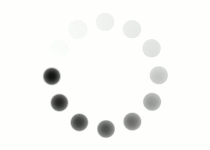Now, it's your turn to learn how to construct a frieze pattern. Then, you will work on a worksheet to actually create your own design. Watch the following video and then answer the question below to make sure you understand the steps to creating your own frieze pattern.
As you watch this video, use the study guide to follow along if you'd like. Click the button below to download the study guide.
![]() In this video, we will look at what it takes to construct three types of frieze patterns. You should recall that a frieze pattern is essentially an infinite strip with a symmetric pattern. We will use the image of this leaf to create our patterns.
In this video, we will look at what it takes to construct three types of frieze patterns. You should recall that a frieze pattern is essentially an infinite strip with a symmetric pattern. We will use the image of this leaf to create our patterns.
Whether you use a simple pattern or an intricate one, it is important to recognize that there are only seven possible frieze patterns when using our basic transformations of translations, rotations, and reflections.
In this first example, we will use a translation only, which is sometimes called a hop. Since I am using a computer to create this pattern, a hop is easy to create. I'll just use the mouse to right-click and choose the option to copy the image, then right click again to paste. I took the time earlier to mark points on a line for reference so that this image is evenly spaced and in a straight line. If you are drawing your pattern on paper, you can do this step by lightly drawing a line and points with a pencil. I will continue to copy and paste this image until the pattern is repeated several times, then I will erase my guidelines and points...
We can use a similar technique for a frieze pattern created with a translation and reflection, also called a hop. In this case the original pattern will reflect over my guideline... then both images will shift to the right... To do that, I'll copy and paste the original image and flip it vertically. Then, I will copy and paste each image translating both to the right...
In the final pattern for this video, I will show you the Spinning Hop which includes a 180 degree rotation and translation. First, I will copy and paste the original image, then rotate it 90 degrees twice... and place it below the original. Then I will copy and paste each image, translating both to the right...
By combining translations, reflections and rotations in different manners, you can create the remaining four Frieze patterns. Feel free to try them with an image of your own. Good Luck!
Question
Which transformation do all frieze patterns have?
